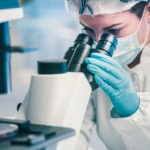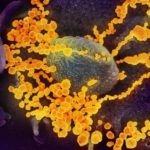Scientific glossary: the keys to understanding the fight against the coronavirus
Scientific information, and many essential niche concepts to tackle it, have lept into the spotlight. Understanding certain key scientific concepts behind the battle against COVID-19 and how SARS-CoV-2’s biological mechanisms actually work will allow us to navigate in the sea of information to better gauge the scope of the problem and the prospects concerning the development of potential treatments.

Understanding practical information can help us deal with uncertainties and curb our anxiety or fears. Science is the key to solving the COVID-19 threat. The list of concepts we present below intends to contribute to putting into perspective all the scientific information that we are confronted with on a daily basis, directly or indirectly.
Zoonosis: is the process whereby a disease is naturally transmitted by animals to humans through either direct exposure or the consumption of products derived from them. The World Health Organization (WHO) monitors health risks and emerging risks through its Global Early Warning System (GLEWS, which also coordinates and combines the warning mechanisms of the UN Food and Agriculture Organization (FAO) and the World Organization for Animal Health (OIE). The Ebola, Zika, Rabies, Dengue, or Crimean-Congo Hemorrhagic Fever (CCHF) viruses are some examples of the zoonotic diseases that these organizations monitor. So far, there is still no scientific confirmation of the animal species from which the SARS-CoV-2 jumped into humans, although the list of candiates has been narrowed down to bats and pangolins, as they have been found to carry strains of viruses that closely resemble SARS-CoV-2.
Ecoepidemiology: Epidemiological research helps us to understand how many people have a disease or disorder, if those numbers are changing, and how the disorder affects our society and our economy. Furthermore, it plays a key role in protecting public health and can provide valuable inputs for the development of new medicines and protection systems against particular diseases, such as COVID-19. ecoepidemiology, or 'landscape epidemiology’, which aims to integrate complex models that explain the multidimensionality of health processes at different levels. Namely, the environment, population behavior, and even the evolution of cellular and molecular systems.
Immunology: is the science that studies organisms’ physiological response mechanisms against microorganism, toxin or antigen attacks. There are still many a lot to understand about how people’s bodies respond to a SARS COV-2 virus infection. However, preliminary studies carried out to date in animals suggest that reinfection is not possible. Whatdo virologists and immunologists do know is that viruses mutate naturally. Precisely because of their parasitic condition, they need to adapt as best as possible to their host’s conditions. In this evolution, during which errors can also occur, following this survival logic, the virus would evolve towards more contagious and less lethal versions, as confirmed by preliminary studies.
Virus: according to the Spanish Society of Virology (SEV), viruses do not inherently have their own metabolism and as such are considered non-living entities. This implies that they depend on other organisms to survive and thrive, just as parasites do. What viruses do carry is genetic material (RNA or DNA, depending on what family they belong to), proteins, and in some cases also a liquid or fatty membrane. The SARS-CoV-2 virus that causes COVID-19, belongs to the Coronaviridae (coronavirus) family, just as its siblings SARS-CoV (responsible for the SARS epidemic in 2002) and MERS-CoV (which caused the respiratory syndrome epidemic in the Middle East in 2012).

Image taken through an electron microscope showing the SARS-CoV-2 virus (yellow) emerging from the surface of laboratory-grown cells. - Credit: NIAID-RML
Coronavirus: According to the British Society for Immunology, to date, seven different types of coronaviruses have been identified to cause respiratory and intestinal illnesses in people. These viruses are spherical in shape and covered in protein spikes that help them bind to and infect healthy cells. This spherical shape with spikes is reminiscent of a crown, or ‘corona’ in Latin, hence ‘coronavirus’. This membrane can be disrupted by detergents and alcohols, which is why soap and alcohol hand sanitiser gels are effective against the virus. If that membrane is destroyed, proteins can no longer infect or communicate with healthy cells.
Vaccines: The basic science behind this method of disease control is the controlled inoculation of an infection in order to generate the necessary antibodies to fight it and, at the same time, prevent severe symptoms from developing. A vaccine’s development process consists of very strict stages of clinical trials and assessment. Furthermore, vaccine-related evidence continues to be regularly reviewed once they are on the market, as the WHO explains. The objective of inoculation is to trigger an immune response similar to the one that would take place in case of a natural infection. The development of this disease prevention mechanism is one of the key scientific breakthroughs of the 20th century, although the history of this discovery dates back a few centuries.According to the World Health Organization, there are currently up to 60 research projects working on a vaccine to stop the SARS-CoV-2 virus epidemic. Thanks to this tremendous international effort in coordinating research tools, the WHO estimates that the long-awaited vaccine may be ready within the next 18 months, as early as the third quarter of 2021 what would be a historical milestone for science.